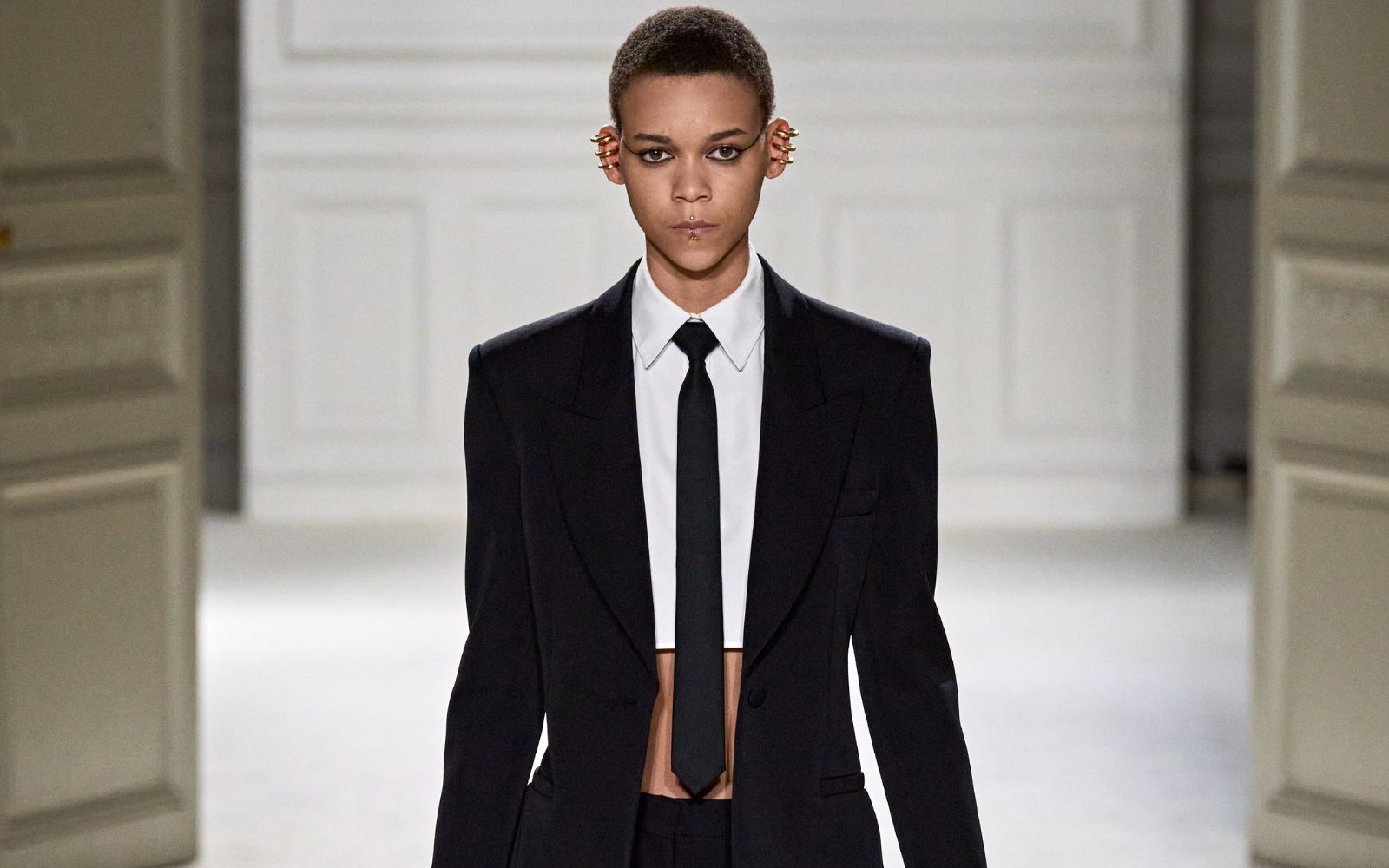
The return of the tie in womenswear From symbol of formal elegance to rebel item
At last July's 2022 G7 summit, leaders were photographed without it, prompting cries for the death of the tie, but, if politicians and businessmen have long since shelved it, the latest fashion weeks, men's and, more importantly, women's fashion weeks have reintroduced it, electing it a must-have wardrobe accessory. The secret of its longevity? A soul poised between formal elegance, a hallmark of belonging, a symbol of conformity or rebellion. It all depends on who and how they wear it.
The origins of this strip of fabric cleverly knotted around the neck have roots far back in history. One only has to look at the tomb of the first Chinese emperor, Shih Huang Ti, and his terracotta army dating back to 221 B.C. to discover the first known tie. Initially, it was a kind of scarf, which military men as well as Roman legionaries wore around their necks to repair their breathing from the dust kicked up by the vanguards. Disappearing for a long period, this accessory reappeared in the 1600s during the Thirty Years' War (1618-1648), around the necks of Croatian mercenaries in the service of France. The slight difference between the pronunciation of the French word for "Croats," "Croates," and the Slavic equivalent, "Hrvati," gives rise to the term "Cravate," or "Tie." From early on wearing it was fashionable, so much so that Louis XIV adopted the oldest version, the lace one, as a child. From being a garment used to protect the throat from the cold, slowly the tie became more and more of a fad, without prejudice to its important function in expressing both group identity and individual taste through subtle references to wealth, social and cultural affiliations of the wearer. Loved in the nineteenth century by poets, artists and dandies such as Beau Brummell, the tie became glamorous and popular in the early twentieth century thanks to fashion magazines such as Vogue and Art-Goût-Beauté. In the same period, women writers and activists appropriated it to challenge convention and stand out in society. For the suffragettes, for Colette and George Sand, it is not just a way to mock men, but a real cry of anger in the face of patriarchal influence that relegates them to a corner.
That flicker of rebellion always remains an intrinsic part of the relationship between women and ties, along with empowerment and a dash of sexy allure (for this we have Yves Saint Laurent and his famous tuxedo to thank). Just think of the iconic figures who have worn it over the decades: Marlene Dietrich, Patti Smith (remember the cover of Horses?), Diane Keaton in Annie Hall, Melanie Griffith with her "power tie" in Working Girl, Julia Roberts at the 1990 Golden Globes, Avril Lavigne as a skater girl in the early 2000s, Blake Lively in Serena van der Woodsen's uniform in Gossip Girl to Zendaya in Sportmax at the Oscars afterparty.
For a long time, for women, choosing a tie as an accessory could have had many meanings, all important: rebelling against patriarchy, asserting their individuality by mocking latent conformity, claiming positions of power in the men's world of work, and fighting gender stereotypes. The latest interpretations by designers, from Louis Vuitton to Gucci, Dior to Ralph Lauren, prefer to leave aside the various socio-cultural nuances of the tie, using it simply as an accessory to give a twist to the look. In 2022, the tie has whatever meaning the wearer wants to give it, but more importantly, it has a fashion soul that makes it a statement item to enrich and make our outfits special, elegant, preppy or fun.
For his FW 2023 2024 collection, Valentino revolutionises the concept of the black tie, using its symbolism to create a unique collection that is free from convention. The tie, which has always been a symbol of male power and conformity, is freed from its constraints and becomes a dynamic element that merges with the shirt and adapts to different contexts so that it can be worn by both men and women. The collection focuses on the essentiality of tailoring and the modernity of everyday wear, but without denying the Maison's heritage, which is fused with a futuristic vision. Homogeneity becomes a framework that highlights the individuality of each person, enhances their nuances and destroys the conventions of traditional uniforms. Valentino's collection redefines the concept of fashion by rewriting the rules and creating a multi-faceted identity that combines history and contemporaneity, renaissance and punk.































































